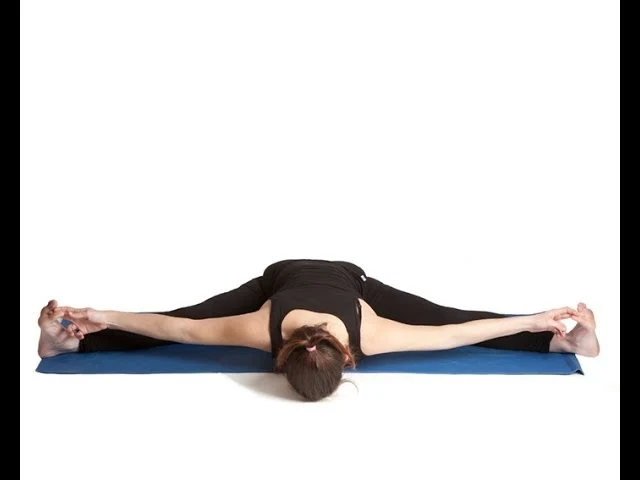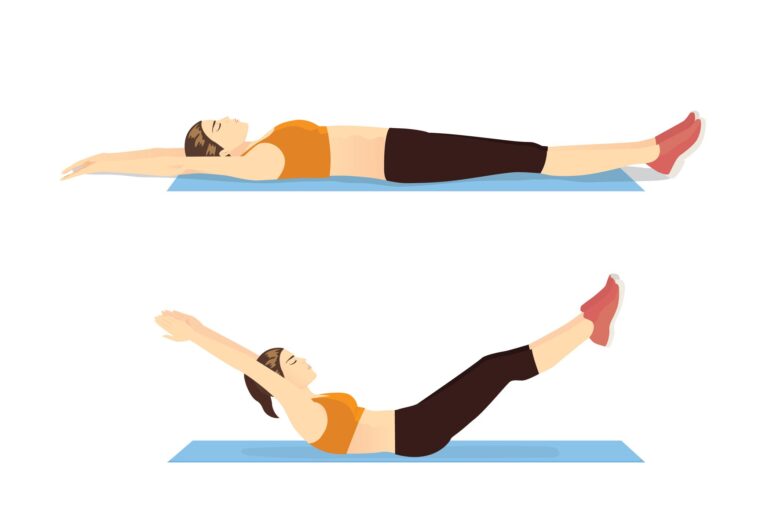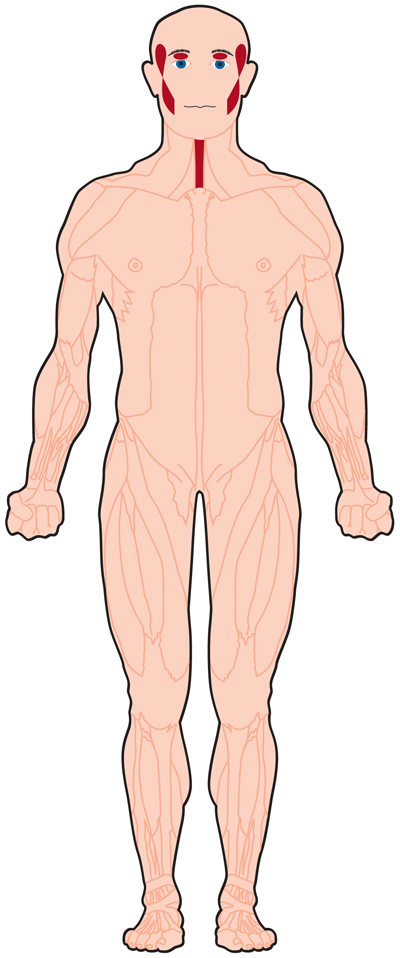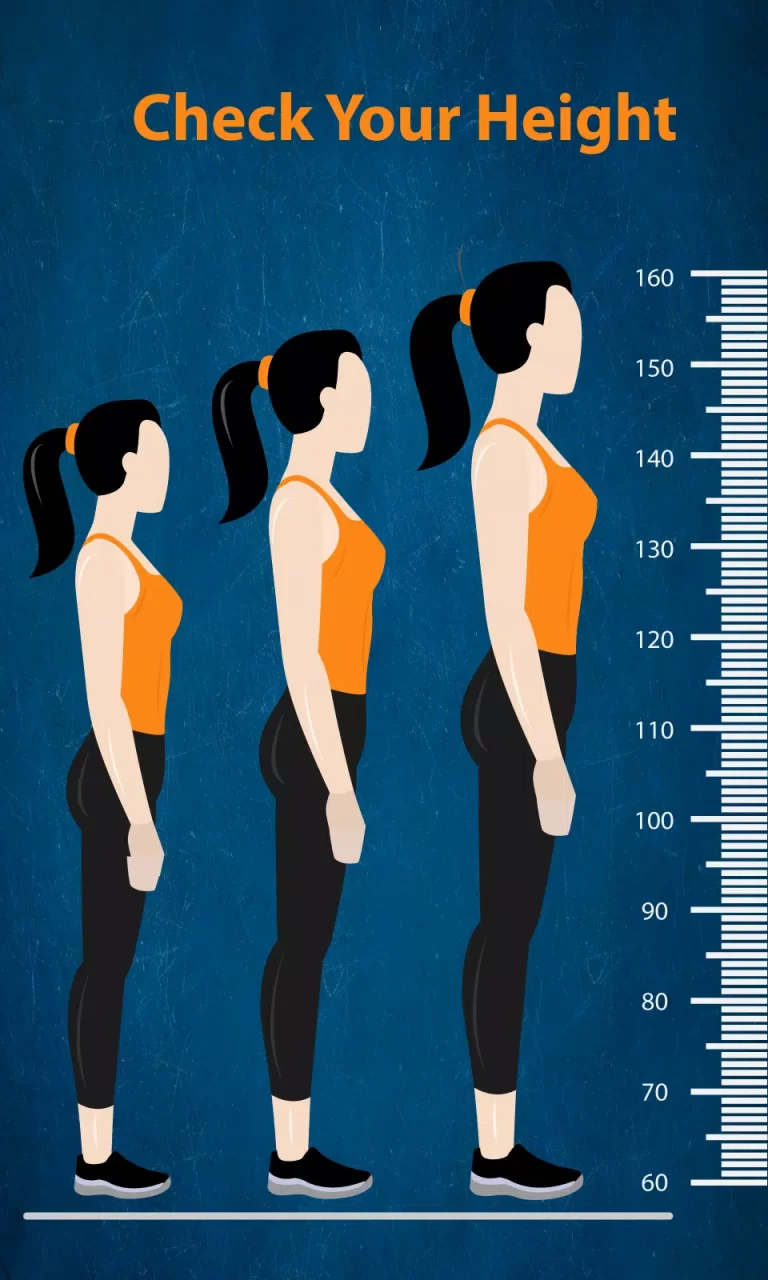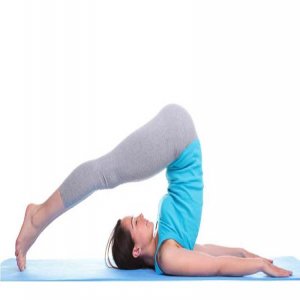Step-up Exercise
What is a Step-up Exercise?
The step-up exercise is a simple yet effective lower-body strength training activity that targets the muscles of the legs and buttocks. It involves stepping up onto an elevated platform or step using one leg at a time and then stepping back down. This exercise mimics the motion of climbing stairs and can be performed using body weight or additional weights for added resistance.
Step-up exercises are commonly included in fitness routines to enhance lower body strength, improve balance, and engage multiple muscle groups simultaneously. They are adaptable to various fitness levels and can be modified to suit individual goals and preferences. In this discussion, we will explore the benefits, proper technique, variations, and safety considerations associated with the step-up exercise.
Introduction
This is a good known lower-limb conditioning exercise. For all fitness levels, the step-up is quickly advanced or regressed, and it can be incorporated into almost any exercise program to increase your quadriceps and glutes’ unilateral strength and muscular mass. In this article, we will describe how to do it, which muscles are trained, help, precautions are taken care of, and variations to spice up your step-up game.
To perform a step-up, you will require a small step stool or you can stand in front of the stairs. Going primarily through your lead foot, raise your body onto the step. Then step backward to the initial position.
When you are doing step-ups, keep your back straight and your tummy muscles nice and contract. Make sure your foot is placed entirely on the step. It is fine to start with a low step height, as well. For this activity, your form is more significant than the step height. When you perform this exercise, alternate your lead foot each time. Do as many repeats as you can, depending on your fitness level, and stop when you are tired or your form starts to suffer.
Remember, for good results, keep your back straight and place your foot fully on the step. Keep your moves smooth and controlled.
Muscle trained
The step-up mainly works the legs and core with minor involvement from the upper limb, except if you utilize load. Here are the direct muscles trained by the step-up.
- Quadriceps: All four quadriceps muscles function together to straighten the knee.
- Glutes: The glutes extend to help you stand up because the hip is in flexion.
- Hip Adductors: Help in hip bend and supply stability for the knee to evade collapsing inwards.
- Hamstrings: Helps the glutes with hip extension, and their eccentric strength gives you better control of your lower body.
- Calves: During the step-up, a slight plantar flexion is involved, but your calf muscles work nonstop to keep you balanced on one leg.
Health Benefits of the step-up exercise:
Once you have learned the bodyweight step-up, adding weight to this training is the bomb. Adding load will make unilateral strength and assists with better muscle growth between sides, and make mounting the stairs easier. Here are a few additional significant advantages of the step-up.
- Enhanced Single-leg Balance: Stepups will enhance your equilibrium and proprioception (sense of attention in space) because you are controlling yourself as you step up and down on one leg. Additionally, you’ll pay closer attention because you don’t want to lose your balance in front of the entire gym crowd.
- Better Muscle Development And Unilateral Strength: Bilateral activities are great and where most of your progress occurs, but occasionally that hides muscle and strength imbalances between legs. Step-ups, for example, are single-leg exercises that support these imbalances and improve gluteal and quadriceps muscular growth.
- Accessible And Easily Progressed: Step-ups are easily accessible to both novice and experienced lifters because all you need is a box, bench, and some weights. It is not technological training like barbell squats and deadlifts and needs minimal instruction. Plus, it is easily moved by raising the height of the box and by utilizing heavier dumbbells.
- Easier on the Lower Back: Like most single-leg exercises, there is a low compressive load on the spine, so your spine is underneath less pressure. Plus, you do not need as much load to get a workout effect due to the unilateral disposition, like with the back squats and Romanian deadlifts.
- May Improve Your Barbell Squat: Increasing leg drive is one way to overcome the common weakness of the barbell squat, which is increasing slowly or becoming caught in the hole. Split squats and break squats are excellent choices but do not sleep on the step-up. Step-ups are another exercise you can do to improve your leg drive because they put more of an emphasis on your glutes and quadriceps and your ability to load up.
Step-Up Exercise Form Tips:
It looks like nothing to it because you place your foot on a box and step up. Yes, this is right, but there are clear things to follow to get the most beneficial out of the step-up.
- Choosing Your Box Height: A typical guideline for box height is that when your foot is on the box, your knee should form a ninety-degree angle. If you are new to this activity or knee pain lives, stepping up on a shorter box is advisable. When you are sensing adventurous, enhancing your box height so your knee is just higher than your hips is great too. More range of motion means more muscle-building possibilities. But it would be most useful if you composed a few things. First, if your trunk leans too far forward, you disadvantage your anterior and posterior core. You do not want to emphasize your lower back, only your quadriceps, and glutes. Second, as you attempt to take a higher step, your knee could give way or your hips could fall out of alignment. Stick to a range of motion you can control and that won’t likely cause any issues.
- Control The Eccentric: A tendency, especially when tired, is to drop your back foot to the bottom and decay to control the eccentric contraction. Not only is this not amazing for your joints, but you miss out on strength and muscle gains. Ever try to control the falling part of the step-up.
- Let The Front Leg Do The Work: The front leg should undertake the lifting at the finish of the step-up to help your quadriceps and glutes grow. But when the weight gets heavier, and the lifter becomes tired, there can be a trend to push off the back leg. Accomplishing so makes it more comfortable for the lead leg, but you will use speed and lose muscular tension on the front leg.
Step-Up Programming Suggestions:
The step-up is an activity to support imbalances between sides and enhance muscle development but do not mistake it for unlimited strength training because it is an additional exercise. Nobody boasts about their one-rep step-up max.
For Hypertrophy: When combined with another glute or quad workout, three to four sets of 8 to 15 repetitions on each side are effective for hypertrophy.
1A. Weighted Stepup: 10 to 15 reps on each side
1B. Bodyweight Hip Thrust: 10 to 20 reps
For endurance: 2 to three sets of 15 to 20 reps on each side using body weight or a light load to feel the burn. Your heart will be pumping afterward, so pairing this with a base exercise works well. For example:
1A. Step Ups 15 to 20 reps on each side
1B. Passive Leg Lowering: 10 reps on each side
How to do the step-up exercise?

- Depending on your hip mobility and strength, put your foot on a box so your knee is flexed at a ninety-degree angle or the hip crease is slightly below your knee. Ensure a level surface is used.
- Either complete with body weight and around one foot out from the box.
- Put your whole lead foot on the box with your toes suggested forward.
- Go through your lead foot to stand up. Think of going in glutes forward into hip extension as you stand up.
- When your knee has been raised, you have the option to balance on a single leg, put another foot on the box, or force your inactive leg onto a raised knee.
- Step down gradually with the non-lead leg and reset and repeat.
Variation of step-up exercise:
Dumbbell step-ups
Level: Beginners to Advanced
Equipment needed: Step or plyo box, dumbbells
- Your feet should be hip-width apart as you stand in front of the step box. contract your core.
- If using dumbbells, hold a dumbbell in both hands.
- When you push through your right foot to raise your body from the floor and put your left foot on the platform, put your right foot on the base of the box.
- when you push up, concentrate on stressing your glutes and maintaining a straight spine.
- Return your left leg to the ground. To control the descent, focus on using your leg muscles.
- You can rotate between legs or switch after you have completed repetitions.
Barbell step-ups
Level: Intermediate to Advanced
Equipment: Squat rack with barbell, step or plyo box
Barbells are an excellent way to introduce developed overload as the weight can be slowly improved every week.
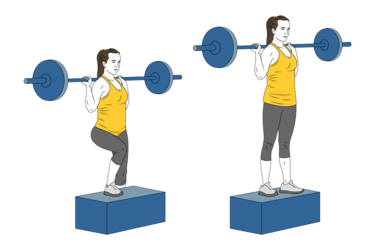
- Adjust the barbell under the rack so the barbell sits just under shoulder height, and the box or step is in front.
- Effort under the barbell put it on your shoulders, and hold it with each hand. Stand up tall to unrack the barbell and move so you are standing in front of the box.
- Stand tall and contract your abdomen.
- Put your left foot onto the box and push up through the foot to drive your body up and bring your right foot onto the box. concentrated on contracting your glutes to help drive motion.
- gradually return your left foot to the ground in a smooth, steady motion.
- Repeat for the number of repetitions, then change sides.
Side step-ups
Level: Intermediate to Advanced
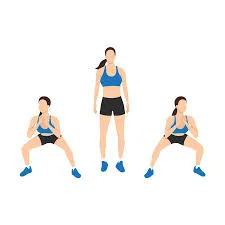
Equipment: Step stool
- Place your left leg next to the step or box as you stand sideways. contract your core and hold a neutral spine.
- Put your right foot onto the box, then compress through the heel of this foot to drive your body up and bring your left leg onto the platform.
- Return your left leg to the ground, making sure to control the descent rather than failing.
- Bring your right foot onto the ground. This is one repetition.
- Repeat for desired repetitions then change sides.
Common Mistakes
To get the most advantages of this exercise and reduce the risk of injury, avoid these mistakes.
Knee Passing Toes
Watch the knee of your good leg by not pushing it past your toes when you step up. Pushing the knee far forward changes the muscles utilized and puts more stress on the knee joint.
Knee Out of Alignment
The knee on your good leg should track over your 2nd and 3rd toes. Evade letting it collapse in or out.
Making Up With Lower Leg
The exercise should come from the top leg, generally getting the trailing leg up as dead weight. stressing up with the lower leg reduces the load on the leading leg.
Rounding the Back
You may require to lean forward a little to evade stressing your knee joint. As you perform, hold your trunk as straight and upright as conceivable, and make sure your chest is up rather than leaning your back.
Safety and Precautions
Talk to your physician or physical therapist if you have had damage or disease affecting your knees, ankle, or hips to see if this activity is suitable for you. You will feel your muscles utilized during this activity, but stop if you feel any pain in these regions.
When beginning this exercise without weight with a step that is lower to the floor. The speed of the step-up motion is largely dependent upon your objectives and the type of activity you are performing.
You can earn a great cardio workout by performing step-ups with zero or light weights, moving quickly, and performing many reps per set. Due to safety and difficulty considerations, you will probably slow down the movement as you add weight.
Anyone who works out with weights should wear a pair of trainer-recommended weight-lifting shoes.
FAQ
What benefits do step-up workouts provide?
A step-up works the gluteal muscles in the buttocks as well as the quadriceps and hamstrings. This is an effective lower-body conditioning exercise in general. A little step stool is required to accomplish a step-up. You might also pause in front of the staircase.
How many step-ups per day should I perform?
Try two to three sets of eight to ten repetitions on each leg with a medium weight for muscle growth.
Try two sets of 5–8 reps with a very slow speed to improve balance.
Beginners should aim for two sets of ten repetitions without adding weight.
Does stepping up burn fat?
Step-ups can generally be applied to any or all of the following: Strengthen your lower body. Develop muscle. (If your diet and exercise routines are suitable for fat loss) Fat loss.
Are step-ups advantageous?
Think about some advantages of including step-ups in your everyday exercise regimen. Leg strength can be improved with step-ups. Step-ups work the glutes, adductors, hamstrings, quadriceps, and other muscles in your lower body. Step-ups can balance out strength inequities.
What occurs if you perform step-ups daily?
Your quads, hamstrings, glutes, and adductors will all get a good workout from step-ups. They push your lower body strength in a way that traditional exercises like squats and lunges don’t because they get your body working on numerous levels.
Step-ups work out what muscles?
Step-ups are a fantastic exercise for working the muscles in your lower body. They mainly target the calves, hamstrings, glutes, and quads. main muscles When executing step-ups, the hamstrings, quads, and glutes are primarily engaged.
What advantages do side step-ups offer?
The lateral step-up strengthens the unilateral leg for improved balance and weakens the bilateral leg for greater strength. Additionally, it enhances hip stability and facilitates knee extension in the mechanically challenging range.
How do step-ups and side step-ups differ from one another?
The side starting position, in contrast to the conventional step-up, enables the athlete to move more like a squat as opposed to a lunge.

